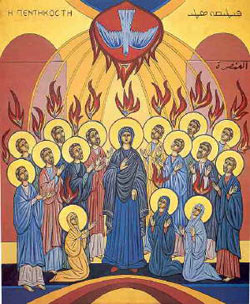Posts
Showing posts from June, 2019
Michael Sheen's The Passion: 72 hours in theatre heaven This epic production drew together the people of Port Talbot and explored myriad ways of delivering theatre – from Twitter to whispered rumour. Has it changed the shape of participatory performance?
- Get link
- Other Apps
Theatre Michael Sheen's The Passion: 72 hours in theatre heaven This epic production drew together the people of Port Talbot and explored myriad ways of delivering theatre – from Twitter to whispered rumour. Has it changed the shape of participatory performance? Lyn Gardner @lyngardner Tue 26 Apr 2011 07.01 EDT Shares 4 Comments 10 Passion for participation ... Michael Sheen is 'crucified' in The Passion, which took place in Port Talbot, Wales, over the Easter weekend. Photograph: Tim Ireland/PA When The Passion finally drew to a close on Aberavon seafront in Port Talbot on Sunday evening, there was a sense not just that the town of Port Talbot had been transformed by the experience, but also the future of large-scale participatory theatre. Aside from its mix of tenderness and mucky grandeur, its majestic s
The Work of God- Opus Dei
- Get link
- Other Apps
Time is passing into eternity, and it’s happening every day. The Church marks the passing of time with the liturgical year, which makes each day bear more significance than simply another cycle of 24 hours. With the proclamation of the Gospel at daily Mass, the mysteries of the life of Christ are made present to sanctify our very lives. Yet, the Church extends her claim over the temporal even further: “The Liturgy of the Hours … is the daily prayer of the Church, marking the hours of each day and sanctifying the day with prayer.” Monks had a different name for the Liturgy of the Hours: opus Dei , or work of God. It is one realization of St. Paul’s exhortation to “pray without ceasing” (1 Thess 5:17) that still constitutes the hourly rhythm of the Church. In her wisdom, the Church provides a way for sanctifying every hour of one’s life, of allowing every minute of the day to be drawn up into the eternity of God through prayer. https://www.dominicanajournal.org/the-work-of-god
St. Junípero Serra and the Founding of the West - Crisis Magazine
- Get link
- Other Apps
St. Junípero Serra and the Founding of the West - Crisis Magazine : The story of the American Founding usually begins in the East. In that account, we speak of the war of independence, the establishment of the American republic, and of prominent founding fathers like George Washington and Thomas Jefferson. But there is an older story involving other founding fathers which took place in the West. Nearly …
The Journey Home - 2014-10-06 - Marcus Daly - Revert
- Get link
- Other Apps
Edwin Markham — ‘He drew a circle that shut me out-Heretic, rebel, a thing to flout.But love and ..
- Get link
- Other Apps
The Hollow Men by T.S. Eliot (read by Tom O'Bedlam)
- Get link
- Other Apps
A New Kind of Sacrament Archbishop Charles J. Chaput, O.F.M. Cap. June 12 2019
- Get link
- Other Apps
Our Lady and the Visionaries of Knock (FULL FILM), Ireland, Catholic fi...
- Get link
- Other Apps
Modern Education: Not Fit For Humans, With Steven Rummelsburg
- Get link
- Other Apps
St Whyte-June 1
- Get link
- Other Apps
St Whyte Celebrated on June 1st This early British saint gave her name to, and is buried at Whitechurch Canonicorum, in Dorset. Her modest shrine, together with that of Edward the Confessor, are the only two pre-Norman Conquest tombs to survive intact in England to this day. Very little is known about her . She is sometimes also called St Candida. Some historians think she was a West Saxon, others say she may have been the Welsh saint Gwen, whose relics were given by St Athelstan to this church. William Worcestre and John Gerard both mention her relics. St Thomas More referred to the custom of offering cakes or cheese on her feast day. In 1990 her leaden coffin was opened. It was inscribed: Hic requiescunt reliquie Sancte Wite, and contained the bones of a small woman about 40 years old. One local tradition identifies St Whyte as a Saxon holy woman who lived as a hermit on the cliffs, possibly lighting beacons to guide sailors. She may have been killed by Danish pirates duri

